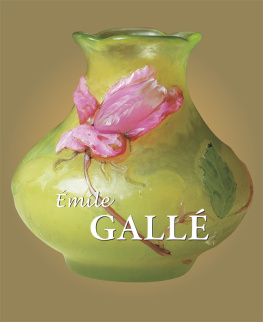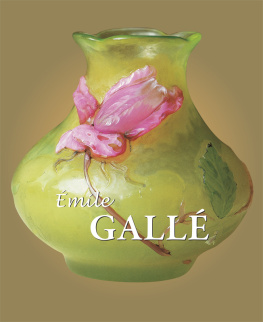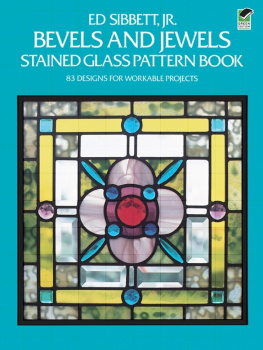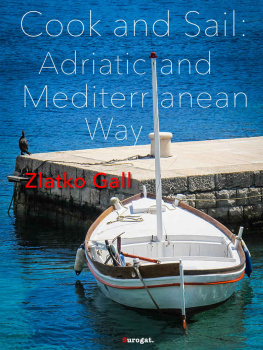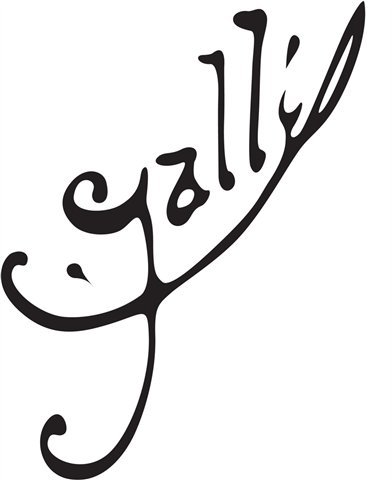Baseline Co. Ltd
All rights reserved.
No part of this publication may be reproduced or adapted without the permission of the copyright holder, throughout the world. Unless otherwise specified, copyright on the works reproduced lies with the respective photographers, artists, heirs or estates. Despite intensive research, it has not always been possible to establish copyright ownership. Where this is the case, we would appreciate notification.
Pitcher, c. 1878. Faience, yellow flakes,
depth: 19 cm. Landesmuseum Wrttemberg, Stuttgart.
INTRODUCTION

Chasseur et Chasseresse coffee service, 1882-1884.
Faience, yellow flakes, blue tin glaze,
coffee pot: height: 26.5 cm, width: 22 cm,
depth: 15 cm. Muse de l cole de Nancy, Nancy.
During the end of the 19 th century, Western Europe experienced a great rebirth and reinvigoration in decorative arts, with a focus on the imitation of nature. In fact, in the 1860s, vital scientific works (by Haeckel, Kommode, Blossfeldt, etc.) were published, offering the new art a repertoire of forms, and directing it towards a path of modernity. At the same time, a taste for Japanese art started to develop, seen through personalities such as Hayashi Tadamasa, an art dealer, who set up residence in France, enabling Western Europe to discover Japanese modes of production. Japanese art is based on the observation of nature, on the poetic interpretation of natural forms. Science and art displayed a similar move towards renewal during the 19 th century.
This went hand in hand with an artistic awakening of nationalities throughout Western Europe. It was no longer a question of the past nor foreign taste. Instead each nation developed its own aesthetic. Above all, functionality became a priority in arts, decorative embellishments were reduced and useful decoration and objects moved to the foreground. Such art was forbidden during the century through various trends: [this century] had no folk art said mile Gall in 1900. In the 1870s to the 1880s, their forces returned. What was seen as superfluous in the past was revived in the field of arts. All these events occurred in Western Europe at the same time, and led in the late 19 th century to the birth of Art Nouveau, a name that perfectly reflected the innovativeness of the art movement. Although an overall stylistic similarity existed, the formal development of Art Nouveau varied from land to land.
The 1889 World Exposition in Paris reflected the scale of the influence of Art Nouveau, exposing a complete image not only of the various areas of production, but also of the national tendencies. Art Nouveau exploded in France in 1895 in a similar way that Alphonse Muchas placard for Sarah Bernhardt in the role of Gismonda caused a sensational uproar. In December of the same year, Siegfried Bing, an art dealer with German ancestry but French nationality, opened a gallery entirely devoted to Art Nouveau and played a significant role in the diffusion of the movement.

Fleurs ornemanises, four bowls,
Animaux hraldiques service, 1884. Faience,
grey flakes, blue tin glaze, height: 3.5 cm, width: 22 cm,
depth: 19 cm. Landesmuseum Wrttemberg, Stuttgart.
In the realm of decorative arts mile Gall (1846-1904) a Nancy-born glassmaker, carpenter, and ceramicist acquired over the decade much fame with his Art-Nouveau-style art pieces. He incorporated his passion for botany in his fathers trade of pottery and glassware in 1877. His inspiration came from nature and from the works of Japanese artists, which he collected. He developed new techniques, filed patents, and directed various steps in the process of development, a legacy in the industrial revolution in his workshops. During the 1889 World Exposition, Gall received three awards for his entries. He then acquired the epithet homo triplex from the critic Roger Marx.
In 1901, together with Victor Prouv (1858-1943), Louis Majorelle (1859-1926), and Eugne Vallin (1856-1922), he founded Alliance Provinciale des Industries dArt, also known as cole de Nancy. Their goal was to eliminate the separation between disciplines: there should no longer exist a distinction between experienced and unexperienced artists. Nature is the foundation of their aesthetic, seen through the creation of flower and plant stylisation. After Art Nouveau reached its peak in 1900, he quickly disappeared from the world of art. In contradiction to his major speeches, Art Nouveau is a luxury style, difficult to reproduce on a large scale. The First International Exhibition of Modern Decorative Arts in Turin of 1902 indicated that a new art movement was already underway: Art Deco.
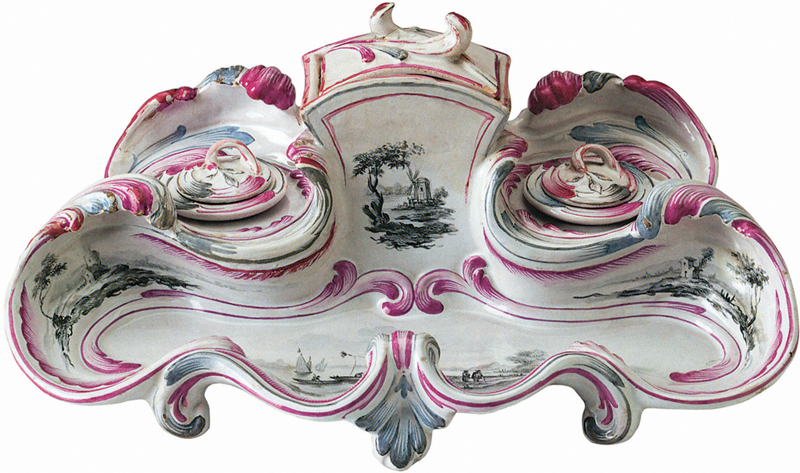
Stationery holder, c. 1878. Faience,
yellowish flakes, white tin glaze,
height: 13.5 cm, width: 34 cm, depth: 20.5 cm.
Landesmuseum Wrttemberg, Stuttgart.
LOVER OF NATURE
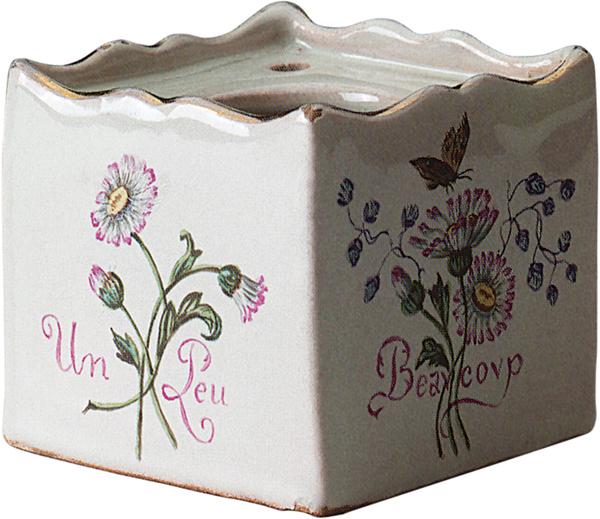
Daisies inkwell, before 1872. Faience,
yellow-reddish flakes, white tin glaze,
height: 6.5 cm, width: 7 cm, depth: 7 cm.
Landesmuseum Wrttemberg, Stuttgart.
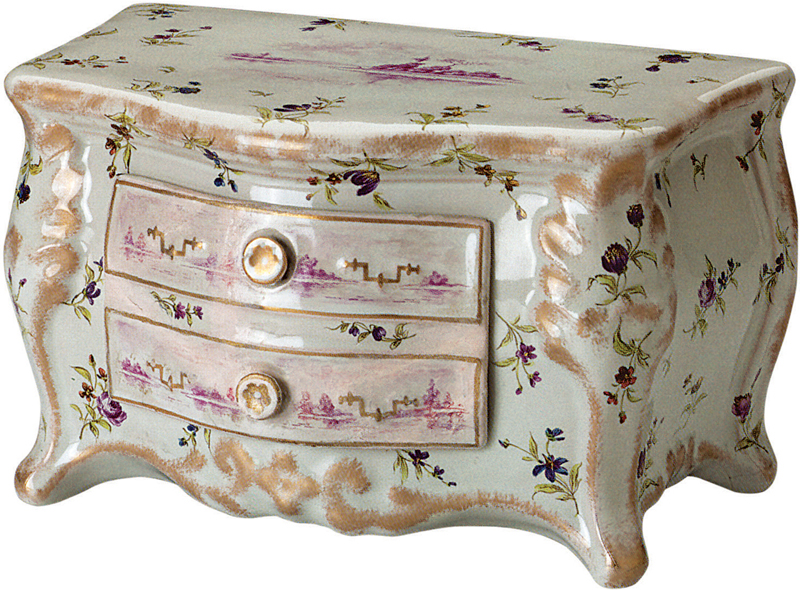
Miniature commode, before 1872. Faience,
yellow-reddish flakes, white tin glaze,
height: 13.5 cm, width: 23 cm, depth: 14.5 cm.
Landesmuseum Wrttemberg, Stuttgart.
The Best is the Enemy of the Good
The constant need to create something new makes us sometimes forget the rules of taste and aesthetics. Have we not witnessed before, people raving about this nonsense: a green rose! A green rose is not a rose, it is a Brussels sprout.
This desire to innovate, based on commercial requirements, would eventually cause the undoing of natures charm, replacing grace with stiffness. Out of this flower called violet, we make a wallflower and we rejoice.
Thus we can see one of our excellent and distinguished colleagues in the horticultural press write the following odd lines, about the bearing of one of the most graceful plants: If I have one criticism to make about the genus Fuchsia

